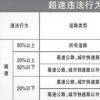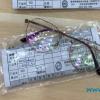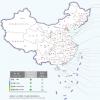(a) An assistant of yours has been criticised over
(a) An assistant of yours has been criticised over a piece of assessed work that he produced for his study course for giving the definition of a non-current asset as ‘a physical asset of substantial cost, owned by the company, which will last longer than one year’.
Required:
Provide an explanation to your assistant of the weaknesses in his definition of non-current assets when
compared to the International Accounting Standards Board’s (IASB) view of assets. (4 marks)
(b) The same assistant has encountered the following matters during the preparation of the draft financial statements of Darby for the year ending 30 September 2009. He has given an explanation of his treatment of them.
(i) Darby spent $200,000 sending its staff on training courses during the year. This has already led to an
improvement in the company’s efficiency and resulted in cost savings. The organiser of the course has stated that the benefits from the training should last for a minimum of four years. The assistant has therefore treated the cost of the training as an intangible asset and charged six months’ amortisation based on the average date during the year on which the training courses were completed. (3 marks)
(ii) During the year the company started research work with a view to the eventual development of a new
processor chip. By 30 September 2009 it had spent $1·6 million on this project. Darby has a past history
of being particularly successful in bringing similar projects to a profitable conclusion. As a consequence the
assistant has treated the expenditure to date on this project as an asset in the statement of financial position.
Darby was also commissioned by a customer to research and, if feasible, produce a computer system to
install in motor vehicles that can automatically stop the vehicle if it is about to be involved in a collision. At
30 September 2009, Darby had spent $2·4 million on this project, but at this date it was uncertain as to
whether the project would be successful. As a consequence the assistant has treated the $2·4 million as an
expense in the income statement. (4 marks)
(iii) Darby signed a contract (for an initial three years) in August 2009 with a company called Media Today to
install a satellite dish and cabling system to a newly built group of residential apartments. Media Today will
provide telephone and television services to the residents of the apartments via the satellite system and pay
Darby $50,000 per annum commencing in December 2009. Work on the installation commenced on
1 September 2009 and the expenditure to 30 September 2009 was $58,000. The installation is expected
to be completed by 31 October 2009. Previous experience with similar contracts indicates that Darby will
make a total profit of $40,000 over the three years on this initial contract. The assistant correctly recorded
the costs to 30 September 2009 of $58,000 as a non-current asset, but then wrote this amount down to
$40,000 (the expected total profit) because he believed the asset to be impaired.
The contract is not a finance lease. Ignore discounting. (4 marks)
Required:
For each of the above items (i) to (iii) comment on the assistant’s treatment of them in the financial
statements for the year ended 30 September 2009 and advise him how they should be treated under
International Financial Reporting Standards.
Note: the mark allocation is shown against each of the three items above.
请帮忙给出正确答案和分析,谢谢!
参考解答
正确答案:
(a)Therearefourelementstotheassistant’sdefinitionofanon-currentassetandheissubstantiallyincorrectinrespectofallofthem.Thetermnon-currentassetswillnormallyincludeintangibleassetsandcertaininvestments;theuseoftheterm‘physicalasset’wouldbespecifictotangibleassetsonly.Whilstitisusuallythecasethatnon-currentassetsareofrelativelyhighvaluethisisnotadefiningaspect.Awastepaperbinmayexhibitthecharacteristicsofanon-currentasset,butonthegroundsofmaterialityitisunlikelytobetreatedassuch.Furthermorethepastcostofanassetmaybeirrelevant;nomatterhowmuchanassethascost,itistheexpectationoffutureeconomicbenefitsflowingfromaresource(normallyintheform.offuturecashinflows)thatdefinesanassetaccordingtotheIASB’sFrameworkforthepreparationandpresentationoffinancialstatements.Theconceptofownershipisnolongeracriticalaspectofthedefinitionofanasset.Itisprobablythecasethatmostnoncurrentassetsinanentity’sstatementoffinancialpositionareownedbytheentity;however,itistheabilityto‘control’assets(includingpreventingothersfromhavingaccesstothem)thatisnowadefiningfeature.Forexample:thisisanimportantcharacteristicintreatingafinanceleaseasanassetofthelesseeratherthanthelessor.Itisalsotruethatmostnon-currentassetswillbeusedbyanentityformorethanoneyearandapartofthedefinitionofproperty,plantandequipmentinIAS16Property,plantandequipmentreferstoanexpectationofuseinmorethanoneperiod,butthisisnotnecessarilyalwaysthecase.Itmaybethatanon-currentassetisacquiredwhichprovesunsuitablefortheentity’sintendeduseorisdamagedinanaccident.Inthesecircumstancesassetsmaynothavebeenusedforlongerthanayear,butneverthelesstheywerereportedasnon-currentsduringthetimetheywereinuse.Anon-currentassetmaybewithinayearoftheendofitsusefullifebut(unlessasaleagreementhasbeenreachedunderIFRS5Non-currentassetsheldforsaleanddiscontinuedoperations)wouldstillbereportedasanon-currentassetifitwasstillgivingeconomicbenefits.Anotherdefiningaspectofnon-currentassetsistheirintendedusei.e.heldforcontinuinguseintheproduction,supplyofgoodsorservices,forrentaltoothersorforadministrativepurposes.(b)(i)TheexpenditureonthetrainingcoursesmayexhibitthecharacteristicsofanassetinthattheyhaveandwillcontinuetobringfutureeconomicbenefitsbywayofincreasedefficiencyandcostsavingstoDarby.However,theexpenditurecannotberecognisedasanassetonthestatementoffinancialpositionandmustbechargedasanexpenseasthecostisincurred.Themainreasonforthislieswiththeissueof’control’;itisDarby’semployeesthathavethe‘skills’providedbythecourses,buttheemployeescanleavethecompanyandtaketheirskillswiththemor,throughaccidentorinjury,maybedeprivedofthoseskills.AlsothecapitalisationofstafftrainingcostsisspecificallyprohibitedunderInternationalFinancialReportingStandards(specificallyIAS38Intangibleassets).(ii)Thequestionspecificallystatesthatthecostsincurredtodateonthedevelopmentofthenewprocessorchipareresearchcosts.IAS38statesthatresearchcostsmustbeexpensed.Thisismainlybecauseresearchistherelativelyearlystageofanewprojectandanyfuturebenefitsaresofarinthefuturethattheycannotbeconsideredtomeetthedefinitionofanasset(probablefutureeconomicbenefits),despitethegoodrecordofsuccessinthepastwithsimilarprojects.Althoughtheworkontheautomaticvehiclebrakingsystemisstillattheresearchstage,thisisdifferentinnaturefromthepreviousexampleastheworkhasbeencommissionedbyacustomer,Assuch,fromtheperspectiveofDarby,itisworkinprogress(acurrentasset)andshouldnotbewrittenoffasanexpense.Anoteofcautionshouldbeaddedhereinthatthequestionsaysthatthesuccessoftheprojectisuncertainwhichpresumablymeansitmaynotbecompleted.ThisdoesnotmeanthatDarbywillnotreceivepaymentfortheworkithascarriedout,butitshouldbecheckedtothecontracttoensurethattheamountithasspenttodate($2·4million)willberecoverable.Intheeventthatsay,forexample,thecontractstatedthatonly$2millionwouldbeallowedforresearchcosts,thiswouldplacealimitonhowmuchDarbycouldtreatasworkinprogress.Ifthiswerethecasethen,forthisexample,Darbywouldhavetoexpense$400,000andtreatonly$2millionasworkinprogress.(iii)Thequestionsuggeststhecorrecttreatmentforthiskindofcontractistotreatthecostsoftheinstallationasanon-currentassetand(presumably)depreciateitoveritsexpectedlifeof(atleast)threeyearsfromwhenitbecomesavailableforuse.Inthiscasetheassetwillnotcomeintouseuntilthenextfinancialyear/reportingperiodandnodepreciationneedstobeprovidedat30September2009.Thecapitalisedcoststodateof$58,000shouldonlybewrittendownifthereisevidencethattheassethasbecomeimpaired.Impairmentoccurswheretherecoverableamountofanassetislessthanitscarryingamount.Theassistantappearstobelievethattherecoverableamountisthefutureprofit,whereas(inthiscase)itisthefuture(net)cashinflows.Thusanyimpairmenttestat30September2009shouldcomparethecarryingamountof$58,000withtheexpectednetcashflowfromthesystemof$98,000($50,000perannumforthreeyearslessfuturecashoutflowstocompletiontheinstallationof$52,000(seenotebelow)).Asthefuturenetcashflowsareinexcessofthecarryingamount,theassetisnotimpairedanditshouldnotbewrittendownbutshownasanon-currentasset(underconstruction)atcostof$58,000.Note:asthecontractisexpectedtomakeaprofitof$40,000onincomeof$150,000,thetotalcostsmustbe$110,000,withcoststodateat$58,000thisleavescompletioncostsof$52,000.
相似问题
2013年12月31日 甲公司以银行存款3000万元取得乙公司60%的股权 能够对乙公司实施控制 形
2013年12月31日,甲公司以银行存款3000万元取得乙公司60%的股权,能够对乙公司实施控制,形成非同一控制下的企业合并。购买日,乙公司可辨认净资产的公允
关于合并财务报表中每股收益的计算 下列说法中正确的有( )。A.应当以个别报表中每股收益自述平均数计
关于合并财务报表中每股收益的计算,下列说法中正确的有( )。A 应当以个别报表中每股收益自述平均数计算B 应当按母公司个别报表中每股收益确定C 应当
某企业于2013年11月接受一项产品安装任务 采用完工百分比法确认劳务收入 预计安装期14个月 合同
某企业于2013年11月接受一项产品安装任务,采用完工百分比法确认劳务收入,预计安装期14个月,合同总收入200万元,合同预计总成本为158万元。至2014年底
企业财务报表附注应包括( )。A.不符合基本会计假设的说明B.主要的会计政策C.财务报表项目注释D.
企业财务报表附注应包括( )。A 不符合基本会计假设的说明B 主要的会计政策C 财务报表项目注释D 分部情况此题为多项选择题。请帮忙给出正确答案和分析,谢谢!
汇总记账凭证账务处理程序的优点是( )。A.有利于会计核算的日常分工B.减轻了登记总分类账的工作量C
汇总记账凭证账务处理程序的优点是( )。A 有利于会计核算的日常分工B 减轻了登记总分类账的工作量C 可以做到试算平衡D 简单明了,易于理解请帮忙给出












